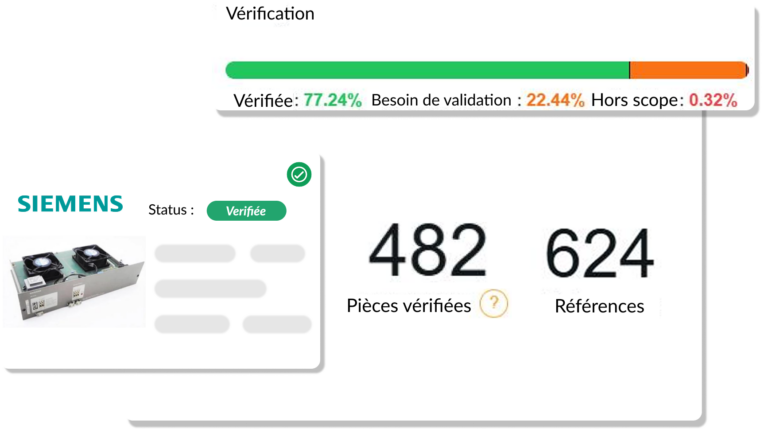Duplicate detection to boost your productivity
Duplicates in databases are a recurring issue for many companies, leading to unnecessary costs and lost productivity. Although this problem may seem invisible at first glance, it can compromise the efficiency of internal processes and hinder decision-making. Detect your duplicates with the kheoos solution

Why do duplicates accumulate in databases?
Human errors in data entry
Data entry mistakes are one of the most common causes of duplicates in databases. For instance, someone might enter the same product reference twice due to a typo, an extra space, or a lack of consistency.
Database merging
When two databases are merged, such as during an acquisition or a partnership, it’s common for similar but slightly different records to be duplicated.
Lack of duplicate prevention solutions
Without dedicated tools to identify and remove duplicates, it becomes difficult for a company to proactively clean its database. As a result, duplicates persist without being detected.
Data inconsistencies
Differences in how information is structured, such as product names or internal codes, can create duplicates, making inventory and sales management particularly complex.
The impact of duplicates on your performance
Reduced team productivity
Employees have to spend time searching for and correcting errors, which slows down operational processes and leads to a loss of productivity.
Errors in inventory management
Duplicates distort stock forecasts, leading to replenishment errors, overstocking, or stockouts, with a direct impact on profitability.
Increased operating costs
Duplicates generate additional costs, such as unnecessary purchases or excess stock, increasing storage expenses.
Say stop to duplicates with the kheoos solution
Step 1 - Clean your inventory data and identify duplicates.
Once your inventory data is received, our advanced artificial intelligence detects duplicates in your database. Leveraging our database of over 85 million references, along with the original manufacturers’ nomenclature, our comparison algorithm identifies identical or similar references, even when they are formulated differently.
On average, our members identify between 15% and 20% duplicates in their inventories.


Step 2 - Analysis and processing of identified duplicates
After detecting duplicates in your data, our platform helps you analyze them in detail. Each group of duplicates is structured, compared, and enriched with information from our database to facilitate validation. You can then independently decide which ones to merge, keep, or delete, with a clear and justified view for each case.
Step 3 - Valuing your duplicates and dormant stock
Once duplicates are identified and processed, you often discover surplus or obsolete items. These products can be reintroduced to the market, and we help you value them by integrating them into our industrial marketplace, allowing you to générate revenue from previously unused stock.
This approach fully aligns with a circular economy model, extending the life of parts and reducing industrial waste.

They said goodbye to duplicates





























Your duplicates are costing you dearly, it's time to take action
Duplicate, poorly entered, or differently formulated references lead to unnecessary purchases and disorganized inventory management. This also results in a waste of time. Our AI technology quickly identifies these duplicates that are invisible to the naked eye. It clarifies your data and helps you regain control of your inventories.
Reduce your costs, improve your efficiency, and better value your parts.
